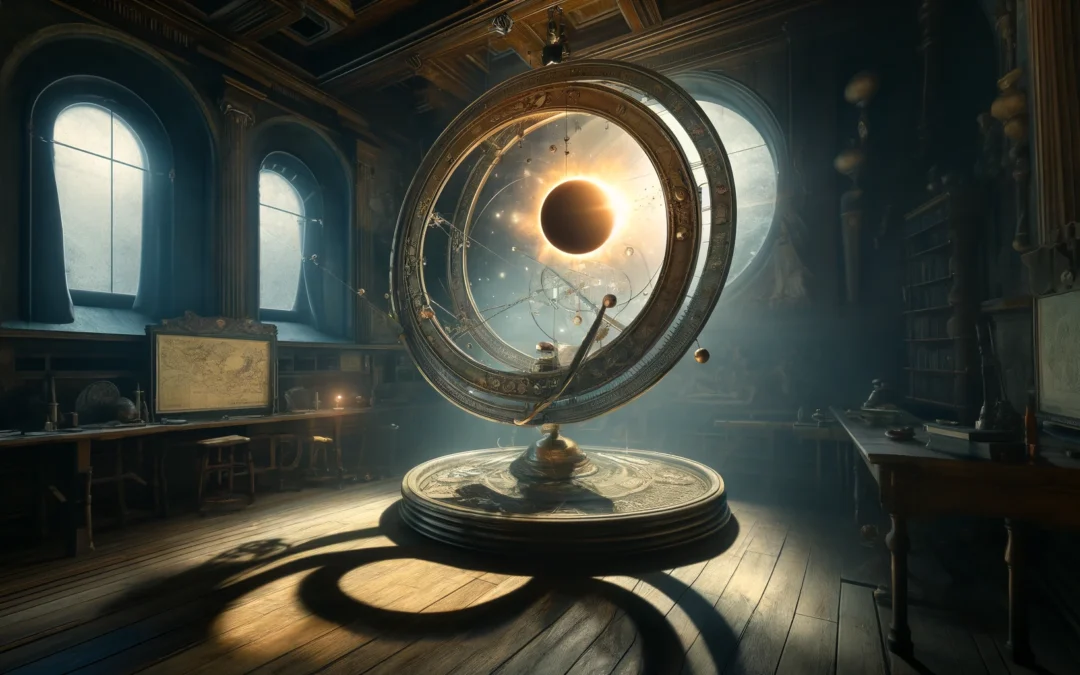In the vast expanse of the universe, where celestial bodies perform their eternal ballet, there lies a phenomenon that blurs the lines between the known and the mysterious. This phenomenon, known as the Allais effect, captivates those who gaze upon the cosmos, presenting an enigma wrapped in the darkness of space. It involves the peculiar behavior of pendulums during solar eclipses, challenging our understanding of physics and hinting at the untold secrets of the celestial sphere.
The discovery of this anomaly dates back to 1954 when French physicist Maurice Allais observed unexpected oscillations in a Foucault pendulum—a simple device designed to demonstrate Earth’s rotation. During a solar eclipse, the pendulum’s trajectory deviated inexplicably, suggesting the presence of unseen forces or perhaps revealing a gap in our grasp of gravitational dynamics. The pendulum, swinging with centuries-old predictability, suddenly danced as if to a different rhythm, casting doubt on our comprehension of the universe’s fundamental laws.
What could cause such aberrations? The moon and sun, in their alignment during an eclipse, exert a unique combination of gravitational forces, yet the magnitude of the Allais effect suggests something more. Various theories have been proposed, spanning the spectrum from gravitational anomalies caused by the specific alignment of celestial bodies to more exotic explanations, including unknown interactions between matter and dark matter or modifications to the theory of gravity itself. Despite the plethora of hypotheses, the Allais effect remains an open question, a testament to the universe’s complexity and our continuing quest for understanding.
The implications of this phenomenon extend beyond the realm of physics, stirring a broader contemplation about the nature of scientific inquiry. If a simple pendulum can reveal such profound mysteries, what does this say about the universe and our place within it? The Allais effect stands as a challenge to the scientific community, an invitation to explore the unknown and confront the limits of our knowledge.
Moreover, this anomaly encourages us to reflect on the methodology of scientific exploration. Anomalies like the Allais effect are not merely puzzles to be solved but signposts on the path to discovery, indicating where the map of known physics ends and the territory of the unknown begins. Each unexplained observation is a thread in the tapestry of the cosmos, urging us to pull and unravel the mysteries hidden within.
In pursuing the secrets of the Allais effect, we embark on a journey that transcends the boundaries of physics, delving into the philosophical and existential. This journey is a reminder that the pursuit of knowledge is not a linear path but a winding road filled with unexpected turns and hidden vistas. The Allais effect, with its defiance of conventional explanation, serves as a beacon, guiding us through the fog of uncertainty towards greater understanding.
As we probe the depths of the universe, seeking answers to its most perplexing questions, the Allais effect offers a lens through which we can view the cosmos in a new light. It invites us to consider the possibility of undiscovered forces, to question the foundations of our scientific theories, and to embrace the humility required to learn from the universe itself.
In the dance of shadows and light, of pendulums and eclipses, we are reminded of the beauty of the unknown and the thrill of discovery. The Allais effect is not just a scientific anomaly; it is a call to adventure, urging us to explore the uncharted territories of space and knowledge. It challenges us to look beyond the visible, to question the accepted, and to wonder at the mysteries that lie in the darkness, waiting to be illuminated.
As we stand on the threshold of discovery, looking out into the vast unknown, the Allais effect serves as a lighthouse in the dark, guiding us on our journey of exploration and understanding. It is a testament to the human spirit’s insatiable curiosity, a reminder that the universe is not just a place to be studied but a wonder to be marveled at. In the midst of the cosmic ballet, the Allais effect beckons us to join in the dance, to seek out the secrets hidden in the interplay of light and shadow, and to celebrate the joy of discovery in the vast, mysterious universe that surrounds us.
Let this exploration of the Allais effect inspire us to look up at the sky with fresh eyes, to see not just the sun, the moon, and the stars, but a canvas of infinite possibilities, a universe brimming with questions yet to be answered, mysteries yet to be solved. In this quest for knowledge, let us be guided by the light of curiosity, for it is in seeking that we find, in questioning that we understand, and in exploring the unknown that we discover the wonders of the cosmos.










